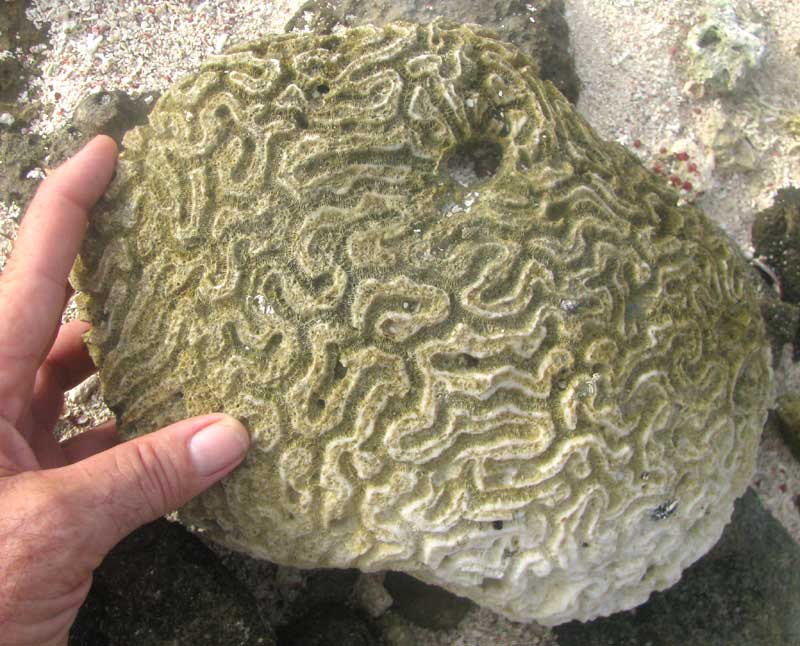Excerpts from Jim Conrad's
Naturalist Newsletter

from the July 17, 2011 Newsletter issued from Mayan Beach Garden Inn 20 kms north of Mahahual; Caribbean coastal beach and mangroves, ~N18.89°, ~W87.64°, Quintana Roo state, MÉXICO
HOW OLD IS THIS CORAL?
At the first rocky point south of us there are tons of dead coral chunks and fragments such as what's shown above. That's what's left of a brain coral that once formed part of the reef offshore. I'm guessing that it's the Symmetrical Brain Coral, DIPLORIA STRIGOSA.
Some coral fragments on that rocky beach are clearly fossils, which lived thousands or even millions of years ago. You know this because they're obviously eroded from bedrock limestone. You might remember our picture of some spongiform fossils in the process of eroding from massive bedrock at www.backyardnature.net/yucatan/fossil1.htm.
However, many or most coral fragments at that rocky point surely were broken from the reef just offshore not long ago. After Hurricane Dean in 2007 enormous amounts of new coral fragments and seashells were added to the beach.
So, is the brain coral in my picture of recent or ancient age? I posed the question to a fossil forum on the Internet and the experts weren't too helpful. Of course a lab could determine the chunk's age by analyzing the half-lives of radioactive isotopes in the coral, or even its Carbon-14 content if the chunk is of fairly recent origin.
That doesn't help us. However, one piece of evidence our coral shows is that it's been around long enough for its surface to have become highly eroded. Take a look at a close-up of a fresh brain coral at http://reefguide.org/pixhtml/symmetricalbrain4.html.
Compare that with a similar close-up of our coral below:

The kind of surface-removing erosion indicated in that picture doesn't take place quickly, as during a single hurricane. For such profound erosion to have taken place, some kind of long-term agent is needed, such as wind, water or chemical action.
Sometimes mineral crystallization occurs in fossils. A general rule is that the more crystallization you observe, the older the fossil is. Many of the cells of our brain coral are filled with white matter. which I'm guessing to be crystallized calcite.
So, even though we have living brain coral at the reef right offshore from us, I'm guessing that the coral in my picture is not recent, but rather is at least a few centuries old, maybe a few millennia, or even a few millions of years old.